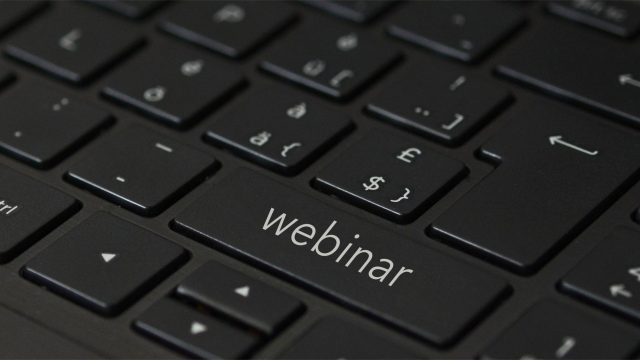Exemplar Global is partnering with Intact Systems on a timely webinar titled “The Role of Artificial Intelligence in Audit and Certification Processes.” The event occurs live on Tuesday, April 11, at 1:00 p.m. U.S. Eastern time. You can learn more and register here.
Webinar speaker Jochen Kleboth, Intact’s head of analytics and AI, has a background not only in data analytics and artificial intelligence, but also in food safety and auditing. He applies this wealth of experience to fundamental issues in the food safety certification industry, where he has been a noteworthy practical and scientific contributor for more than 15 years.
In this conversation, we speak with Kleboth about his career journey, how AI and machine learning will change the auditing landscape, and what attendees can expect from our upcoming webinar.
EXEMPLAR GLOBAL: Please tell us a bit about your background and how you got involved in food safety and auditing.
JOCHEN KLEBOTH: I grew up in Austria and first encountered the food industry through my parents, who had a farm in the Alps. I studied food technology and biotechnology in Vienna as well as internationally. In doing that, I came across the Austrian Ministry of Agriculture, which had food testing labs. That’s where I first got in touch with certification and auditing processes. Back then, everything was checklist-based using pen and paper.
A big problem we had was understanding if people really complied with regulations and laws when it came to food production. These kinds of questions led me to specialize in the study of statistics and food safety, learning how to leverage data and AI to ensure food safety. I developed several ideas to improve food safety auditing for those struggling with manual solutions and helping them move toward digitalization.
Of course, storing data is one thing, but leveraging that data for insight into processes is what really counts. Most companies acquire and store a lot of data, which is great, but what can you do with it? AI technologies are important, and so are classical statistics and visualization methods. Here at Intact, we’ve developed a special tool set for analytics, which consists of business intelligence methods as well as algorithms.
EG: How does Intact assist auditors, whether they be third-party auditors, second-party auditors, or internal auditors?
JK: The Intact Platform enables you to cover the whole audit process, from planning and performing audits to audit reviews and invoicing. In addition, it allows the auditor to digitally score and note everything that takes place during the audit, from rating certain requirements to describing nonconformities to uploading pictures from a mobile device. He or she gets all the information that an auditor needs right on their laptop or mobile device.
Intact Analytics provides a layer on top of that with visual insights from dashboards and predictions. To accomplish this, we use natural language processing, in which the system reads through free text in real time. That allows the auditor to tell the auditee, “In this nonconformity, we see that a critical control point is poorly defined. Please go a little bit more into detail here.” The goal is to get away from these generic, scattershot audits to individualized ones. This is something we see quite often these days.
I should also mention that COVID demonstrated how effectively our system handles remote audits. That insight has really pushed us to provide even better tools to enable remote audits.
EG: There’s a lot in the news today about all the interesting and odd applications for ChatGPT, but aside from that, there’s certainly a great amount of utility for business coming from advancements in artificial intelligence, machine learning, and natural language processing. As these tools continue to get “smarter,” what will that mean for audit professionals in terms of changing their working lives?
JK: One of the challenges we see when we talk about these tools and their use of artificial intelligence are some assumptions about the word “intelligence.” The bottom line is that they are not intelligent. They’re quite nice helpers but will never replace a human being. But they are very good at bringing together many data and making suggestions. For example, scanning or reading through documents is a big task for many auditors. AI tools can read through these documents in digital form and figure out interesting topics (if you want to call them risks, call them risks), which may not be as perfectly coherent as those described in other document sections.
That doesn’t mean auditors no longer have to go through documents anymore. It just provides some directions, or hints, of where problems could be in the future. And that enables an auditor to say, “Hmmm, that’s very interesting. I will consider that and look at this auditee from another perspective.”
AI is also quite good at picture recognition. In practice, that could mean taking a picture within an environment to document a certain nonconformity; the AI can then reveal other similarly nonconforming areas in which the auditor should take a second look.
So, I would say that both text recognition as well as picture recognition are quite interesting uses for AI within auditing. Anomaly detection is another function that is often used by auditors. Take checklists as an example. Every checklist has its own internal logic; such as if 4.8 is a good rating, then 7.6 cannot be a bad one. This internal logic can really help at the point of audit, because sometimes errors in documentation or data quality occur. These errors can be discovered in real time and the auditor will know that something doesn’t add up.
MR: Finally, let’s chat a bit about the webinar we have coming up on April 11. As the presenter, what are you planning to cover during the session?
JK: We’re going to cover a lot of ground. We’ll talk about why data and AI matter in the space of the certification industry, technological developments, and some ideas for taking data from storage to utilization. There will be a use case demonstrating how it all comes together in the real world in the case of a certification body or a standard setter. Finally, we’ll talk briefly about what the future holds and how auditors can take advantage of the forthcoming changes for the benefits of their own careers.

